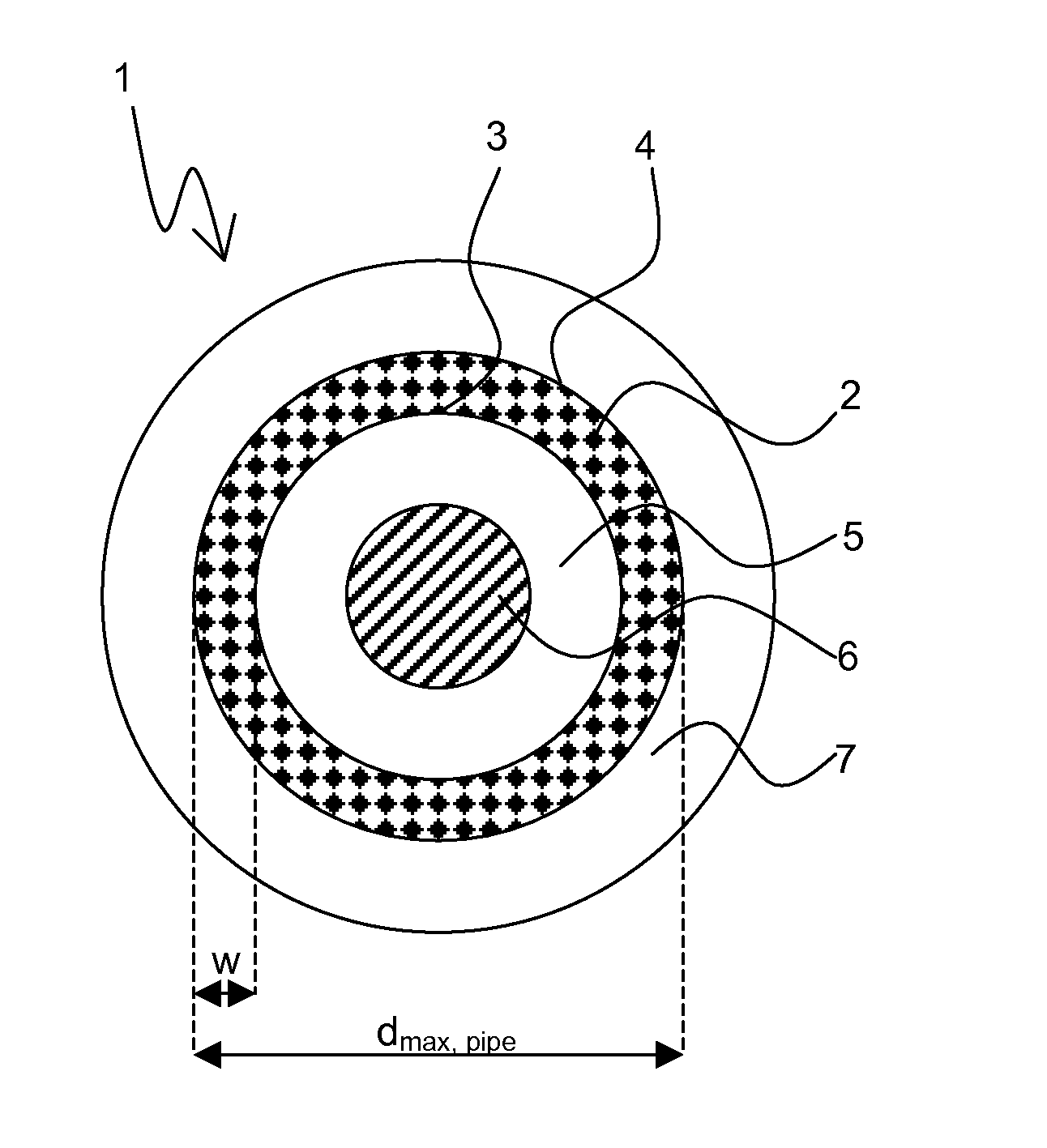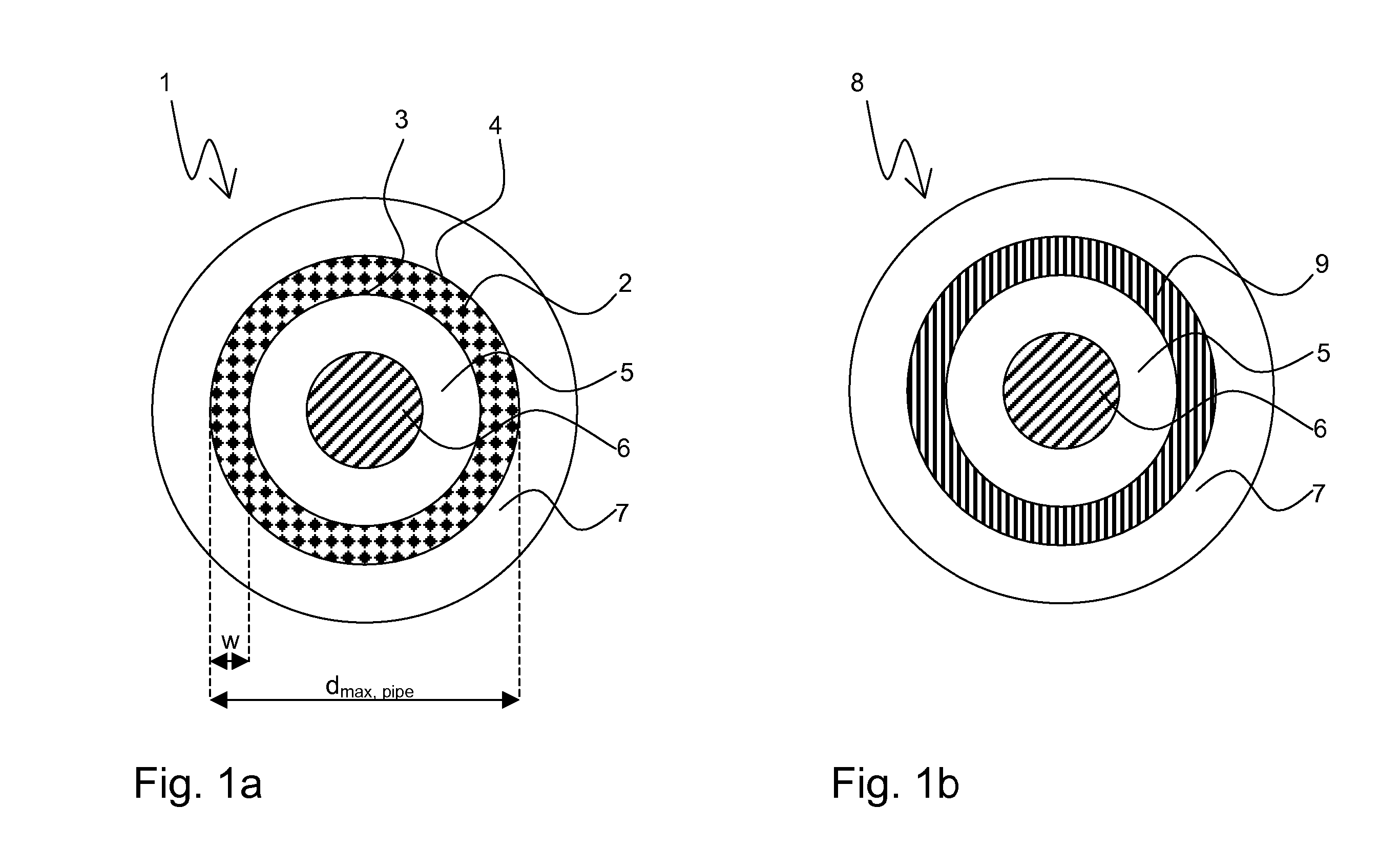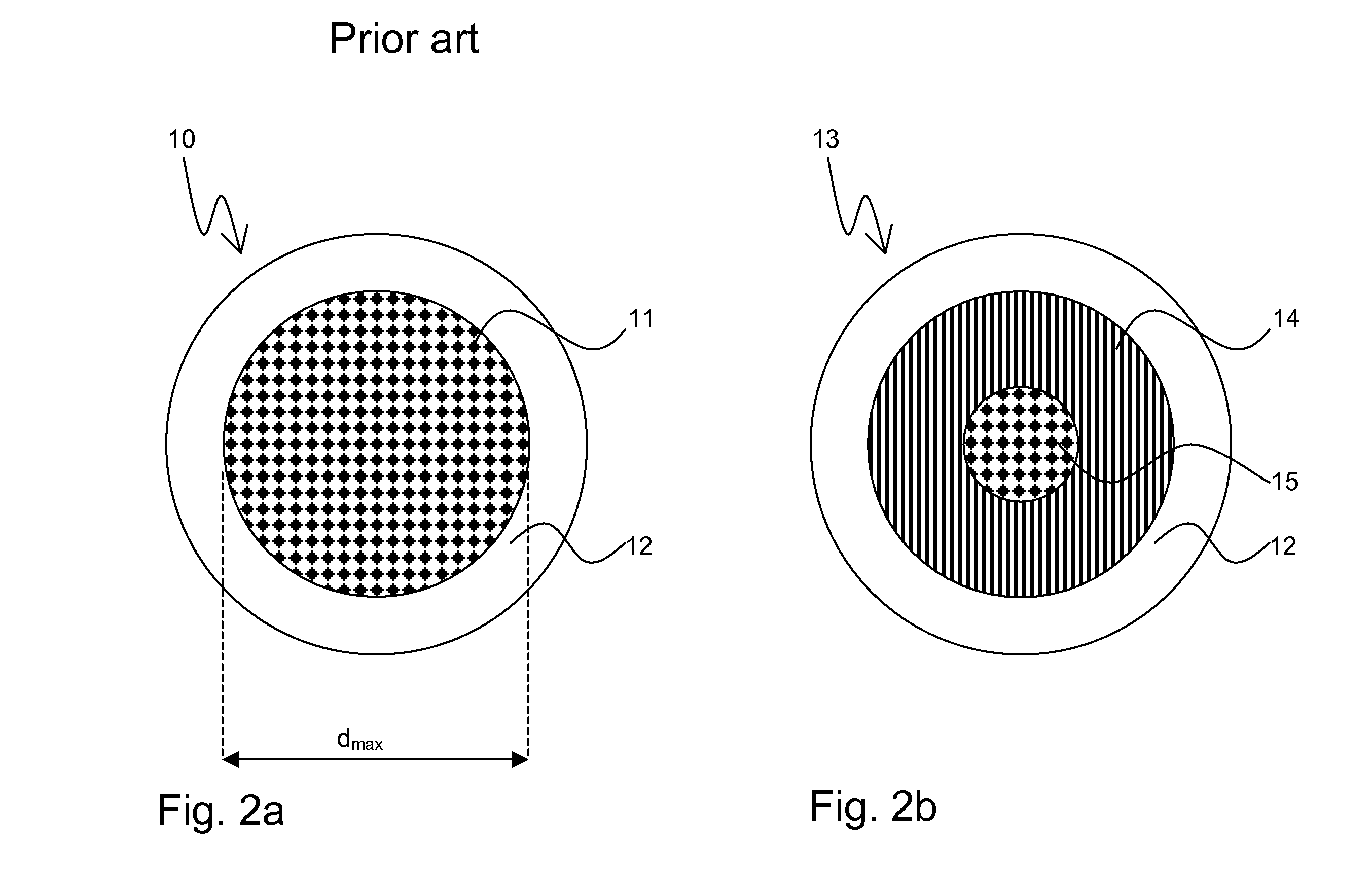SUPERCONDUCTIVE ELEMENT CONTAINING Nb3Sn
a superconductive element and nb3sn technology, applied in the direction of superconductors/hyperconductors, superconductor devices, electrical apparatus, etc., can solve the problems of deteriorating the superconductive properties of filaments, unable to use superconducting magnets, and wires produced by the method described, etc., to achieve improved superconductive properties in a large volume fraction, high critical temperature tc, and high critical magnetic field strength
- Summary
- Abstract
- Description
- Claims
- Application Information
AI Technical Summary
Benefits of technology
Problems solved by technology
Method used
Image
Examples
Embodiment Construction
[0046]FIG. 2a shows a preliminary filament structure 10 of a usual bronze route for fabrication of Nb3Sn wires with diameters of 4 to 5 μm. In a typical inventive superconductive wire, there are some thousands of superconductive filaments, typically grouped in bundles. The bundles are usually grouped around a pure copper core or arranged within a pure copper tube (not shown). The preliminary filament structure 10 comprises a rod 11. Originally, the rod 11 consist of ductile Nb (or NbTa), which reacts gradually with Sn (from the Cu—Sn bronze) to Nb3Sn by annealing it at an elevated reaction temperature T in order to induce a solid state diffusion reaction, which transforms the preliminary filament structure 10 into a superconductive filament structure 13. From FIG. 2b it can be seen that the superconductive filament structure 13 consists of an unreacted Nb core 15, surrounded by a superconductive Nb3Sn-phase 14. The inner part of the filament, that is the unreacted Nb core 15, is thu...
PUM
| Property | Measurement | Unit |
|---|---|---|
| reaction temperature | aaaaa | aaaaa |
| reaction temperature | aaaaa | aaaaa |
| diameters | aaaaa | aaaaa |
Abstract
Description
Claims
Application Information
 Login to View More
Login to View More - R&D
- Intellectual Property
- Life Sciences
- Materials
- Tech Scout
- Unparalleled Data Quality
- Higher Quality Content
- 60% Fewer Hallucinations
Browse by: Latest US Patents, China's latest patents, Technical Efficacy Thesaurus, Application Domain, Technology Topic, Popular Technical Reports.
© 2025 PatSnap. All rights reserved.Legal|Privacy policy|Modern Slavery Act Transparency Statement|Sitemap|About US| Contact US: help@patsnap.com



